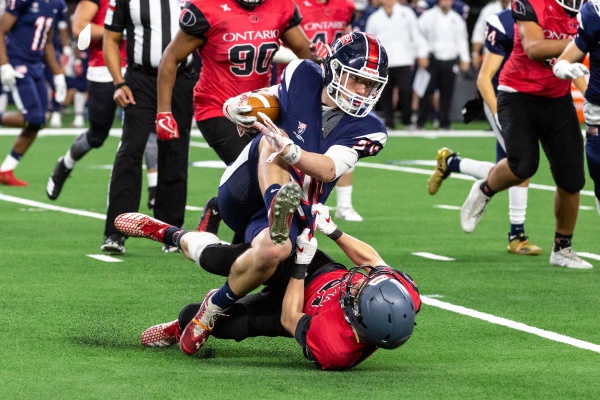The Four Errors Players Make

Every single error a football player makes can be put into four identifiable categories. The instruction to eliminate errors can vary and are subjective based on the error made but identifying these errors is the first step to correcting them.
Related Content: [Podcast] Deliberate Practice Week 8 - Ask the right questions, solve the right problems
Andy Ryland, USA Football’s senior manager in education and training, has been vital to the evolution of teaching football within the organization. Constantly leading clinics and seminars to aid in the education of coaches, Ryland is a recognized leader amongst the football coaching community.
Ryland identified each of these errors on the Coach and Coordinator podcast with host Keith Grabowski.
- Technical Error
The most recognizable and easily identifiable for coaches, the technical error comes first. “Most football coaches are very comfortable with the technical error,” starts Ryland. “[The technical error means] something in our technique was not quite right, and we think that’s why we got beat on the play because we didn’t execute the technique correctly versus the opponent.”
- Tactical Error
Tactical errors fall under the umbrella of a player not fully understanding a role that is given to them. “The tactical error is a little bigger, a little wider ranging,” adds the former Penn State linebacker. “[This is] where we’re teaching our plays and we’re deep into the season, but sometimes you find yourself asking, ‘Does the athlete really know what we’re trying to accomplish?’ and maybe it’s why his role is so important and he needs to continue to execute this thing.”
Having played defense under Joe Paterno, Ryland uses that side of the ball for his example. “Think about the slanting defensive end and he’s going to penetrate inside into the B-gap, but it’s zone away and he slants into the B-gap and gets upfield instead of chasing the B-gap and staying in the B-gap. Does he really understand tactically what we’re trying to accomplish and why it’s important? Or does he just think the slant is for him to get into the backfield and do something great?”
- Perceptual Error
The perceptual error comes when the athlete is unable to recognize a play or situation unfolding in front of them and act accordingly. Ryland takes a line here from the host, Grabowski. “It’s more than a line on a piece of paper,” he reiterates. “Quarterbacks are probably the best example where they’re our shot-caller out there. They’re our field general, they know everything, but sometimes they get a misread. Sometimes they don’t see the defender hanging in the flat or trying to high-low you or do something tricky. So, are we seeing the right things? Are we processing the right information?”
- Physical Error
A physical error may not be what one initially thinks of, according to Ryland. “I don’t mean that as, ‘Oh, you’ve got to get tougher, you’ve got to anchor down on the bull rush.’ Sometimes there’s physical limitations to our players. I was talking with a high-level coach this weekend and they were talking about a player on their team that had a nagging ankle injury. That ankle injury was really hurting his ability to sink, really flex and get into really low-level positions. So, this player was struggling on their level-two tackles … just because they couldn't really bend and get down there. The best fix for that athlete was actually the coach went to the strength and conditioning staff and the athletic trainers, and they were trying to work on some step ups, some flexibilities, some soft tissue work and trying to get that ankle back to movement.”
